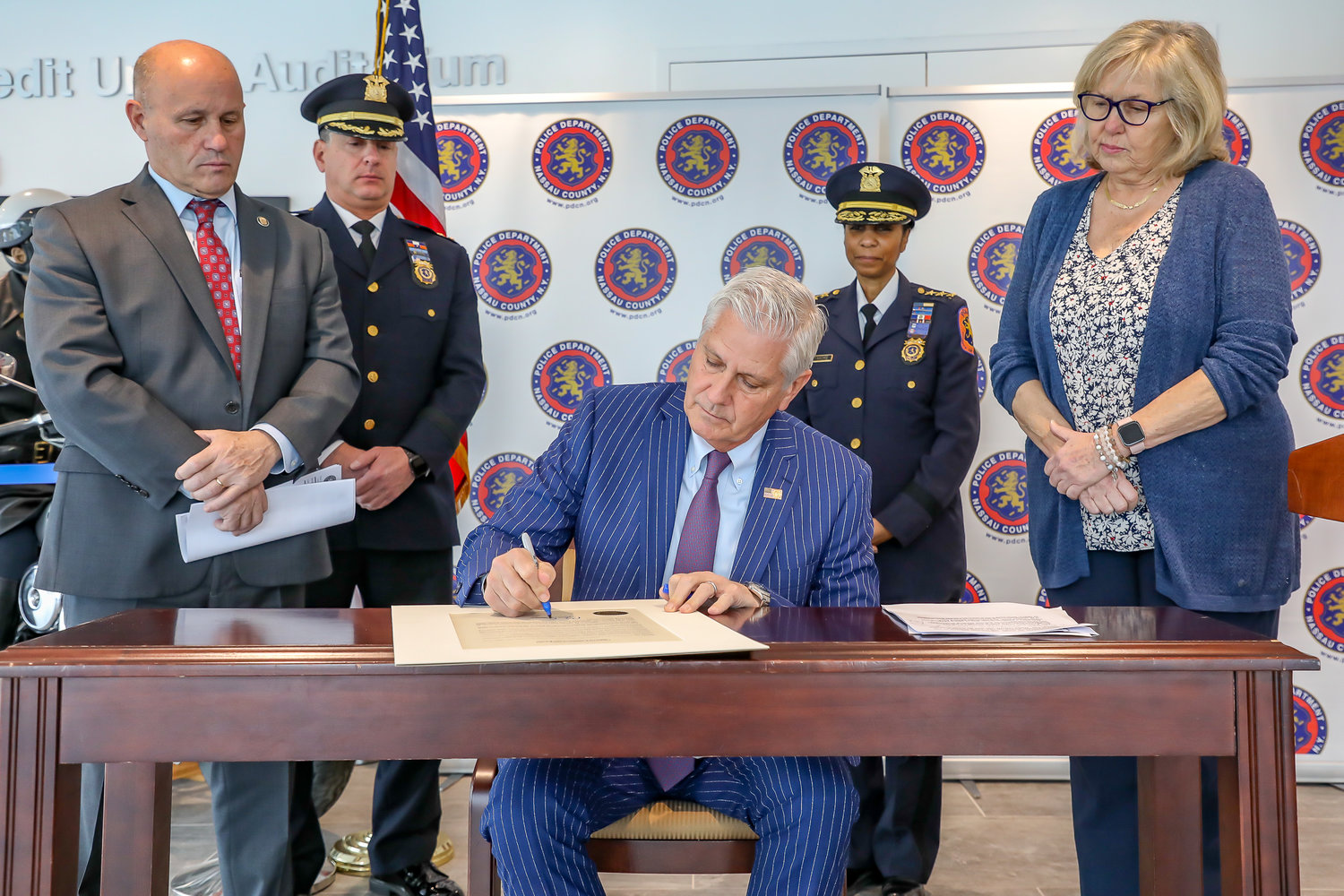Blakeman: Disclose criminal case data
The Nassau County Police Department will begin issuing a daily report with pending criminal case data and bail status of those rearrested, according to an executive order signed Jan. 19 by County Executive Bruce Blakeman.
New York state’s bail reform law, which sets most non-violent criminal defendants free while they await trial or a plea deal, has been a hot topic since it took effect in early 2020, and less than a month into his term, Blakeman is pushing to rescind it.
The county executive said the order would allow “residents to learn more about the potential threat reform laws pose to their safety.”
Bail reform was passed, in part, to relieve overcrowding in jails. Brian Sullivan, the Nassau Correction Officers Benevolent Association president, said that overcrowding has not been a problem at the Nassau County Correctional Center, on Carman Avenue in East Meadow, for decades, and he supports Blakeman’s order.
For most of his 33 years at the jail, Sullivan said, he has not seen overcrowding. There was overcrowding in the 1980s and early ’90s owing to the crack cocaine epidemic, he said, but that was alleviated as use of the drug diminished.
“The rolling headcount of the inmates in this jail should be between 1,400 and 1,700 inmates,” Sullivan said. “Going back to about two or three years ago, right before bail reform legislation, the count was trending down and was about 1,100 or 1,000 inmates.”
The headcount is now at about 800, he said.
Sullivan said he has a problem with letting those who are charged with crimes go before trial without placing them in rehabilitation, or diversion, programs for drugs and other offenses. “I’ve traveled to Albany to warn people about what’s going on here, and people weren’t believing us.” Legislators, he said, suspected that corrections officers did not want to see headcounts drop because that would mean less overtime pay for them.
The list of crimes that no longer require bail includes stalking, assault without serious injury, burglary, many drug offenses, and some types of arson and robbery. Among the bail-eligible crimes are felony sex offenses, witness tampering or intimidation, and conspiracy to commit a felony, as well as any violent crime.
People have become fed up with rising crime in the New York metropolitan area, Sullivan said, specifically citing gun crimes, anti-Asian crimes and subway crimes. “Something has to be done,” he said, “and everyone deserves to see the statistics.”
Susan Gottehrer, chapter director of the Nassau County New York Civil Liberties Union, said there is no state data to suggest that bail reform has led to an increase in crime. “Pretrial detention is traumatic and sometimes deadly,” Gottehrer said. “It disrupts people’s lives and jeopardizes people’s jobs and housing and does nothing to address the root cause of harm or prevent future harm.”
Bail criminalizes poverty, Gottehrer continued. “There is a racial disparity component to it as well because the numbers show that most people who can’t afford bail are minorities.”
“We need to fix policing, and we need to fix the criminal justice system,” she said. “And bail reform is a part of that.”
Shanequa Levin, convenor of Long Island United to Transform Policing and Community Safety, said bail was supposed to ensure that people return for their court dates. It was never meant to serve as a punishment for an alleged crime. “In this country, we are innocent until proven guilty,” Levin said. “. . . It’s not innocent until I can make cash bail.”
Levin cited court data showing that since New York enacted bail reform in 2020, 503 people on Long Island were rearrested for violent crimes while awaiting trial on another criminal charge, while 34,741 people were not.
“We need to focus on the fact that an overwhelming majority of those that were released and not assigned bail were not rearrested,” she said. “We should focus on how to change policing and not focus on people who would be out anyway if they could afford the funds.”
“The bottom line is investing in communities is what fixes communities,” Gottherer said. “We need to let people know that their lives matter and that their communities are important.”
Sullivan agreed that there is room for reform. “If there’s a reason somebody is committing a crime, whether it’s drug abuse or mental issues, that’s what needs to be addressed,” Sullivan said. “. . . We should go back and look at maybe starting programs for people, and maybe we should fund programs, and this should’ve been done first.”

 50.0°,
Overcast
50.0°,
Overcast 




